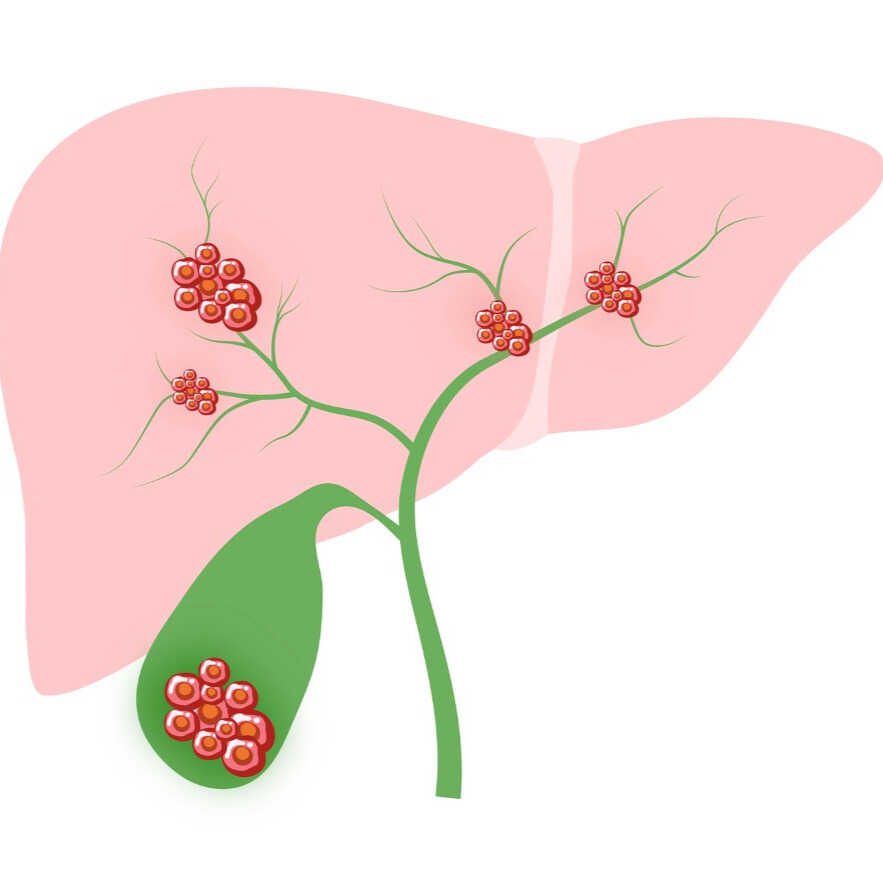Bile duct cancer
Early detection saves lives
Bile duct carcinoma, also known as cholangiocarcinoma, is a rare but aggressive form of cancer that develops in the bile ducts.

Causes and risk factors
Bile duct carcinoma, also known as cholangiocarcinoma, is a rare but aggressive form of cancer that develops in the bile ducts. The exact causes are not fully understood, but several risk factors have been identified:
- Chronic inflammation of the bile ducts: diseases such as primary sclerosing cholangitis increase the risk.
- Congenital malformations: Anomalies of the bile ducts can favor the development.
- Liver diseases: Chronic hepatitis or liver cirrhosis are possible risk factors.
- Parasitic infections: Certain liver parasites, especially in Southeast Asia, are associated with an increased risk.
- Lifestyle factors: Smoking, excessive alcohol consumption and obesity can increase the risk.
Symptoms: Recognize warning signs
In the early stages, cholangiocarcinoma often causes no specific symptoms. However, as the disease progresses, the following signs may appear:
- Jaundice (icterus): Yellowing of the skin and eyes due to bile stasis.
- Dark urine and light-colored stools: Changes in excretions due to impaired bile flow.
- Abdominal pain: Especially in the right upper abdomen.
- Loss of appetite and weight loss: Unintentional weight loss can be a warning sign.
- Fever and night sweats: As a sign of a possible infection or inflammation.
Diagnostic options
- Imaging procedures: Ultrasound, computed tomography (CT) and magnetic resonance imaging (MRI) help to visualize tumors
- Endoscopic procedures: Endoscopic retrograde cholangiopancreatography (ERCP) allows the bile ducts to be visualized and tissue samples to be taken.
- Blood tests: Determination of tumor markers such as CA 19-9 and liver function values.
- Biopsy: Removal and analysis of tissue samples to confirm the diagnosis.
Modern treatment approaches
The treatment of cholangiocarcinoma depends on the stage of the disease, the exact location of the tumor and the patient’s general state of health:
- Surgical removal: Surgery can be curative for localized tumors.
- Radiotherapy: To reduce the size of tumors or to alleviate symptoms.
- Immunotherapy and chemotherapy: use of drugs to combat cancer cells, especially in advanced stages.
- Targeted substances: In the late stages, targeted substances that specifically target genetic changes can be used. This requires a molecular profile to be created at an early stage.
Prevention
Although not all risk factors are preventable, certain measures can reduce the risk of developing cholangiocarcinoma:
- Avoid liver parasites: Especially in endemic areas, the consumption of raw or undercooked fish should be avoided.
- Vaccination against hepatitis: Protection against hepatitis B can reduce the risk of liver disease and related cancers.
- Healthy lifestyle: A balanced diet, regular physical activity and refraining from smoking and excessive alcohol consumption promote liver health.
- Regular medical check-ups: In the case of existing liver or bile diseases, regular examinations should be carried out in order to detect changes at an early stage.
